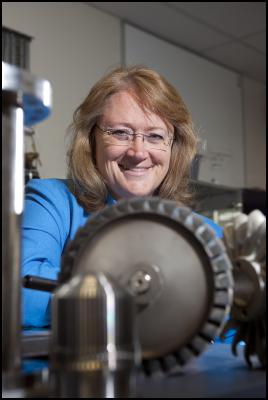Public Lecture At UC On Plans For Chch Following Research
Thursday, 21 March 2013, 10:43 am
Press Release: University of Canterbury
Public Lecture At UC On Plans For Christchurch Following Research Project
March 21, 2013
A University of Canterbury mechanical engineering professor will present results of a research project into a development plan for Christchurch that meets the aspirations of residents at a public lecture on campus this Friday.
Professor Susan Krumdieck said the project idea was to apply a 250 year design scope, utilising every advance in environmental infrastructure, passive design, human-centred urban form, and oil-free transport.
The project focused on using engineering for long-term sustainability of the underlying service structures as a foundation.
``This is not an alternative to the Christchurch city plan. It is a problem-solving research exercise that has some interesting results in the context of Christchurch at the moment. The problems that the research is focusing on are exacerbated in Christchurch as a result of the earthquakes, but are present in many other cities as well,’’ Professor Krumdieck said.
``Principally, there is a shortage of affordable housing. This shortage is often met by low density sprawled development on the city fringes. We know this kind of development is not good. Its two worst effects being increased car dependence and loss of community.
``Applying some recent research from Australia, we estimate that the combined costs to the city (in terms of infrastructure) and residents (transport, health, greenhouse gas emissions) are around $2 billion greater if the housing demand resulting from the earthquakes is met by sprawled fringe development, as opposed to housing within the existing bounds of the city.
Advertisement - scroll to continue reading
``However, many kinds of non-sprawl developments are not that great either. Think of the numerous in-fill developments where one house on a quarter acre section is torn down and a row of townhouses replaces it.
``Although the increased density resulting from this kind of development tends to place people closer to their destinations, and hence may reduce car travel and dependence, they thoroughly fail to provide any positive community, or other, aspects. Now, the earthquake has generated a demand for housing equating to approximately 12,000 people, and on top of that there are a significant number of rebuild workers also moving to Christchurch.
``It doesn't matter what a city’s buildings look like if the infrastructure and activity systems cannot adapt to reduction of oil, coal and gas supplies, limitations of alternative technologies and the challenges of climate change. It is possible to engineer prosperous systems that can sustain human and environmental wellbeing.
``We do not have any artists’ impressions of this because what it actually looks like is the icing on the cake. It is unimportant if the elements behind the vision, in this case the methodology, do not work,’’ Professor Krumdieck said.

Photo: Susan Krumdieck
ENDS
Advertisement - scroll to continue reading
a.supporter:hover {background:#EC4438!important;} @media screen and (max-width: 480px) { #byline-block div.byline-block {padding-right:16px;}}
Using Scoop for work?
Scoop is free for personal use, but you’ll need a licence for work use. This is part of our Ethical Paywall and how we fund Scoop. Join today with plans starting from less than $3 per week, plus gain access to exclusive Pro features.
Join Pro Individual Find out more
Find more from University of Canterbury on InfoPages.